XỬ TRÍ SẢN KHOA CÁC SẢN PHỤ ĐÁI THÁO ĐƯỜNG ĐIỀU TRỊ INSULIN TẠI BỆNH VIỆN BẠCH MAI
Nội dung chính của bài viết
Tóm tắt
Mục tiêu: Khảo sát đặc điểm lâm sàng, cận lâm sàng và một số yếu tố liên quan của các sản phụ trong 3 tháng cuối thai kỳ mắc đái tháo đường điều trị insulin tại Bệnh viện Bạch Mai, và nhận xét về xử trí sản khoa của những sản phụ này. Đối tượng: Gồm 84 sản phụ bị đái tháo đường điều trị insulin kết thúc thai nghén tại khoa Phụ Sản, Bệnh viện Bạch Mai từ tháng 6/2023 đến 6/2024. Kết quả: Tuổi trung bình của đối tượng nghiên cứu là 33,08 ± 5,5 tuổi, nhóm sản phụ 30- 35 tuổi chiếm tỷ lệ cao nhất (38,1%), nhóm sản phụ ≤ 25 tuổi chiếm tỷ lệ thấp nhất (8,3%). Có 50% số sản phụ là cán bộ viên chức, chỉ có 8,3% số sản phụ là nông dân. Có 60,7% số sản phụ được chẩn đoán ĐTĐTK, 28,6% mắc ĐTĐ typ 2, chỉ có 10,7% được chẩn đoán ĐTĐ typ 1. Tiền sử sản khoa: tiền sử đẻ non, sảy thai, sinh con to, ĐTĐTK và THA/TSG ở lần mang thai trước lần lượt là 2,4%; 10,7%; 26,2%; 20,2% và 13,1%. Mức tăng cân trung bình là 10,57 ± 5 kg, nhóm sản phụ tăng >12kg chiếm tỷ lệ cao nhất (38,1%), thấp nhất là nhóm sản phụ tăng <8 kg (8,3%). Tỷ lệ đạt mục tiêu điều trị ở nhóm ĐTĐ trước thai kỳ cao hơn nhóm ĐTĐTK, sự khác biệt là có ý nghĩa thống kê (p=0,02). Thời điểm kết thúc thai kỳ trung bình là 35,87±2,9 tuần. Chưa ghi nhận sự khác biệt có ý nghĩa thống kê giữa nhóm ĐTĐ trước thai kỳ và ĐTĐTK về tỷ lệ mổ lấy thai; biến chứng thai kỳ (THA/TSG, đẻ non, đa ối, thai lưu); điểm APGAR vào phút thứ 1 và phút thứ 5; biến chứng sơ sinh. Kết luận: Biến chứng đối với mẹ: không có sự khác biệt có ý nghĩa thống kê về các biến chứng của mẹ giữa hai nhóm ĐTĐ trước thai kỳ và ĐTĐTK. Biến chứng đối với sơ sinh: không có sự khác biệt có ý nghĩa thống kê về tỷ lệ thai to, suy hô hấp và hạ đường huyết sau sinh giữa hai nhóm.
Chi tiết bài viết
Từ khóa
Đái tháo đường (ĐTĐ), ĐTĐ trước thai kỳ, đái tháo đường thai kỳ (ĐTĐTK)
Tài liệu tham khảo
2. Phan Thị Thu Hằng. Nghiên cứu đặc điểm lâm sàng, cận lâm sàng và thải độ xử trí đối với thai phụ đái tháo đường thai kỳ điều trị bằng insulin. Trường Đại học Y Hà Nội; 2016.
3. Bùi Sơn Thắng, Đặng Thị Minh Nguyệt. Kết quả xử trí sản khoa của sản phụ đái tháo đường thai kỳ tại bệnh viện sản nhi nghệ an năm 2021-2022. Tạp chí Y học Việt Nam. 2023;522(1)
4. Lê Thị Thanh Tâm. Nghiên cứu phân bố-một số yếu tố liên quan và kết quả sản khoa ở thai phụ đái tháo đường thai kỳ. Trường Đại Học Y Hà Nội; 2015.
5. Vũ Bích Nga. Nghiên cứu glucose máu lúc đói để sàng lọc đái tháo đường thai kỳ và bước đầu đánh giá hiệu quả điều trị. Trường Đại học Y Hà Nội; 2009.
6. Nguyễn Thị Lệ Thu. Nghiên cứu tỷ lệ và cách xử trí trong chuyển dạ đối với thai phụ đái tháo đường thai nghén tại khoa sản bệnh viện bạch mai. Trường Đại học Y Hà Nội; 2010.
7. Yogev và cộng sự. Hyperglycemia and adverse pregnancy outcome (hapo) study: Preeclampsia. Am J Obstet Gynecol. Mar 2010;202(3):255.e1-7. doi:10.1016/j.ajog.2010.01.024
8. Muwafag Hyari và cộng sự. Maternal and fetal outcomes in diabetic pregnant women. JR Med Serv. 2013;20:56-61.


